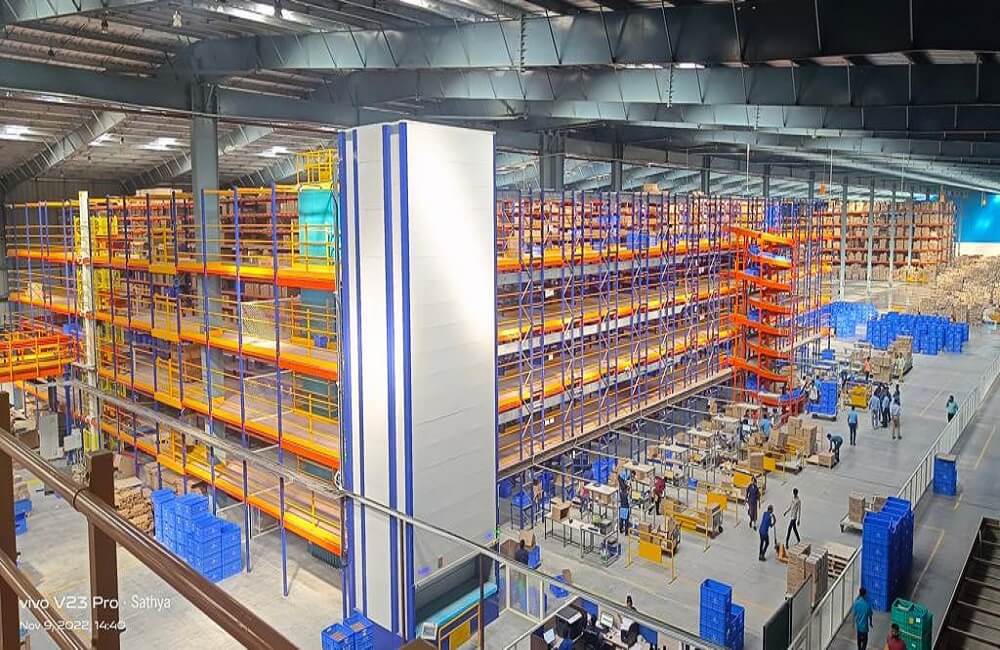Smart warehousing involves emerging technologies which optimizes operations, efficiency, and reduces costs.
Amid a technological revolution, industries are undergoing transformative upgrades, and warehouses are no exception. As pen and paper make way for robots and AI-driven systems, warehouses are transforming into efficient hubs of innovation. The traditional image of bustling warehouses filled with stacks of boxes and paperwork is fading, making way for a smarter and more sustainable vision – the smart warehouse. The transition to smart warehouses not only enhances operational efficiency but also plays a crucial role in contributing to sustainability.
Integration of AI and IoT
Smart warehousing involves the use of IoT and AI where it optimizes their operations, increases efficiency, and reduces costs. The integration of IoT and AI is creating a synergistic effect, leading to the emergence of smart warehouses. From robots that glide through aisles picking orders with precision to intelligent systems that optimize storage space and temperature control, AI is transforming the processes to move products. In a smart warehouse, IoT devices collect data from various sources, and AI algorithms analyze this data to provide actionable insights. AI can use data from IoT devices to predict equipment failures, allowing for proactive maintenance and reducing downtime. These technologies not only boost efficiency and reduce errors, but they also contribute significantly to a sustainable supply chain.

Executive Director
Patel Integrated Logistics Ltd
Sustainability
The definition of sustainability has evolved beyond merely moving goods swiftly and cost-effectively from point A to point B. Today’s high-performing organizations recognize that a truly sustainable supply chain encompasses both economic prosperity and environmental responsibility. It is about minimizing carbon footprint, reducing waste, and optimizing resource utilization and smart warehousing technologies are becoming indispensable tools in this endeavor.
Opting for electric vehicles in warehouse shipments and powering warehouses with solar energy significantly cuts carbon emissions. The smart sensors not only ensure the preservation of perishable goods but also reduce energy consumption. This results in an optimized environment that aligns with both efficiency and sustainability goals. Moreover, these warehouses integrate state-of-the-art tech like LED lighting, motion sensors, and sophisticated insulation systems. It can smartly adjust and use energy only when required. The implementation of Artificial Intelligence (AI) and the Internet of Things (IoT) further enhances energy-saving initiatives. The IoT sensors actively monitor energy usage within the warehouse, providing a wealth of data. AI algorithms then analyze this data, identifying opportunities for energy conservation and efficiency improvement.
This dynamic synergy between AI and IoT is a driving force behind the evolution of energy-efficient warehouse management. The continuous monitoring and analysis of energy consumption not only contribute to cost savings but also align with broader sustainability objectives. As warehouses strive to minimize their environmental impact, the integration of AI and IoT technologies emerges as a strategic and impactful approach towards achieving energy efficiency.
Creating a better environment
Sustainability goes beyond hardware and software; it is about cultivating a purpose-driven culture within the warehouse itself. This means creating a diverse and inclusive workforce, where different voices and perspectives contribute to a more efficient and responsible operation. It also means creating a deep understanding of the environmental impact of every decision, from packaging materials to waste disposal, and making conscious choices to minimize that impact.
We are on the path to technological progression but the transition to smart warehousing will not happen overnight. It requires investment, technological expertise, and a commitment to change. But the rewards – for the environment, for our communities, and for our businesses are undeniably immense. We are at the crossroads of innovation and responsibility, the choice is clear: either we build a future choked by inefficiency and pollution, or we embrace the opportunity to create a sustainable, intelligent, and thriving supply chain. The future of smart warehousing is not just about moving goods; it is about moving towards a better world.
(Mahesh Fogla, the author of the article is Executive Director at Patel Integrated Logistics Ltd – The views expressed are personal)



